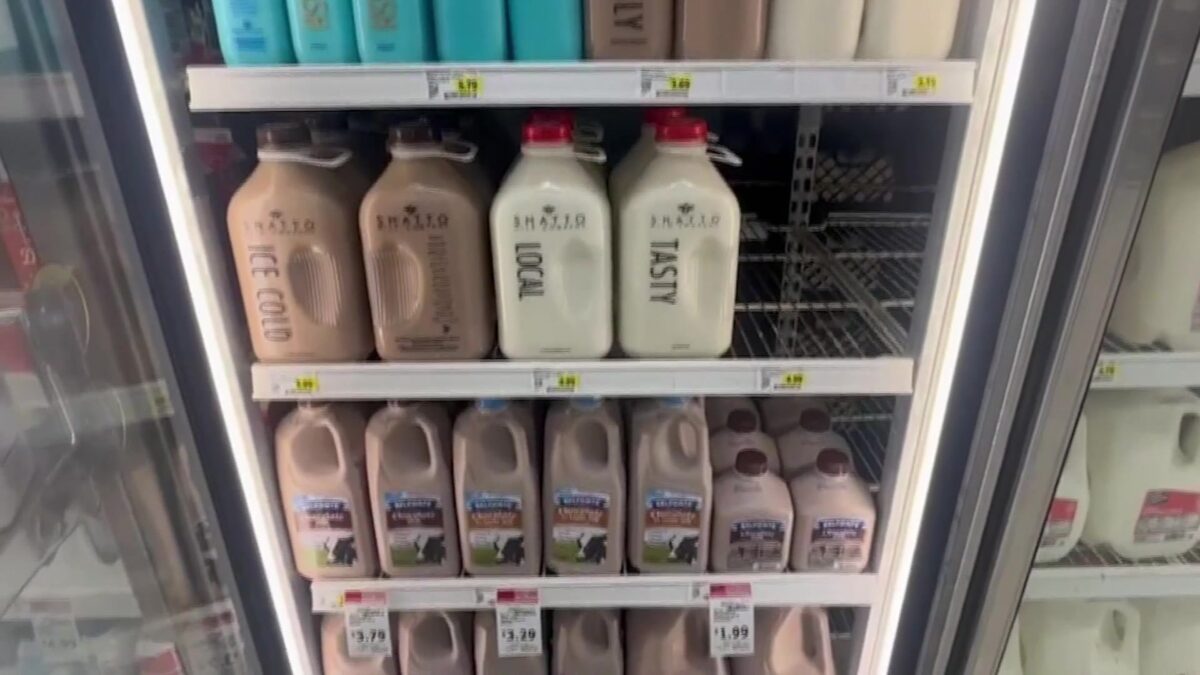Summer heat takes a toll on Missouri’s dairy cattle and milk production

Abigail McCluskey
ST. JOSEPH, Mo. (News-Press NOW) — This summer’s heat has been hard on people across Northwest Missouri, but it’s also taken a toll on other residents: cattle.
When temperatures climb above 72 degrees Fahrenheit, cattle begin to experience heat stress. Unlike humans, they can’t run and escape to an air conditioner. A combination of high temperatures and humidity can also leave herds exhausted.
“The cow starts stressing over 72 degrees. And so you’re talking on a day when it’s 95, you know, 25 degrees warmer plus heat index. Milk production is seriously affected by that,” said local Buchanan County farmer Tim Gach, who raises beef cattle and previously operated a dairy farm.
This summer, temperatures across northwest Missouri soared into the 90s, with heat indices over 100 F for several days. Humidity makes sweating more difficult and raises the “feels-like” temperatures or heat index.
 Red lines show temperatures soaring in the 100s.
Red lines show temperatures soaring in the 100s.
Storm Tracker Chief Meteorologist Jared Shelton explained the science behind humidity and sweating.
“The way sweat works is you get the cool-off when it evaporates. And when you have higher humidity, you have a lower rate of evaporation. So temps could be far away from 100, but if the humidity is high enough, you could have feels-like temperatures over 105,” said Shelton.
Cows are especially vulnerable because they can only produce about 10% as much sweat as humans. This makes it harder for them to regulate body heat and more susceptible to heat-induced stress.
“They can sweat fairly effectively, but of course not nearly as good as humans,” said Jay Johnson, associate professor of animal welfare and stress physiology at the University of Missouri. “That’s really why the humidity can play a large role in a cow’s ability to deal with heat stress.”
 Temperature Humidity Index (THI) for cattle shows what stress level cattle will be in depending on relative humidity and temperature.
Temperature Humidity Index (THI) for cattle shows what stress level cattle will be in depending on relative humidity and temperature.
Researchers and farmers use a scale called the “temperature humidity index”, which helps provide an easy visual and indicates when cattle might experience stress.
Even with mild temperatures in the 70s, elevated humidity percentages can push cattle into that stress threshold.
Heat stress in cattle isn’t just about comfort — it directly affects their biology. When cows overheat, their feed intake drops dramatically, which lowers the energy available for milk production.
Then, when cows do produce and consume energy, it’s redirected to cooling their body instead of milk production.
Over time, this nutritional imbalance can weaken immune systems, making cows more vulnerable to illnesses. Researchers note that prolonged periods of heat stress can even affect reproductive performance, delaying calving cycles and further impacting farm productivity.
According to research done by the University of Missouri, heat stress can reduce milk production by three to 20%.
This loss in milk production can add up quickly, especially across the Midwest, where dairy farming is a key industry.
A four-year trend has shown a steady decrease in milk production between May and August, some of the warmest months of the year.
While Dairy is still retally available on store shelves, the strain on farmers is evident.
 The red line shows milk production trends for 2025. A noticeable decrease in production is noticed from May through August.
The red line shows milk production trends for 2025. A noticeable decrease in production is noticed from May through August.
“If we’re trying to finish out cattle for butcher, they almost shut down and virtually quit eating, which makes it difficult when you are trying to get them ready for market,” said Gach.
Besides a change in eating habits, Johnson said there are other ways to notice if cows are in distress.
“They’re going to try to dissipate body heat, usually through panting. You’ll see increased respiration rate, greater breathing, and even open-mouth breathing,” said Johnson.
The University of Missouri Department of Animal Sciences recommends several strategies for helping herds endure the summer heat: providing shade wherever possible, using sprinklers or misting systems, ensuring constant access to clean, cool water and monitoring body temperature for signs of stress.
For farmers like Gach, it comes down to giving their herds relief whenever possible.
His cattle have access to both shade and ponds for cooling off — two simple measures which can make a big difference on triple-digit days.
As summers trend hotter and more humid, experts say managing heat stress will remain one of the biggest challenges for Missouri’s cattle industry. And while dairy may still reach our tables, the work behind it is growing more difficult each year.